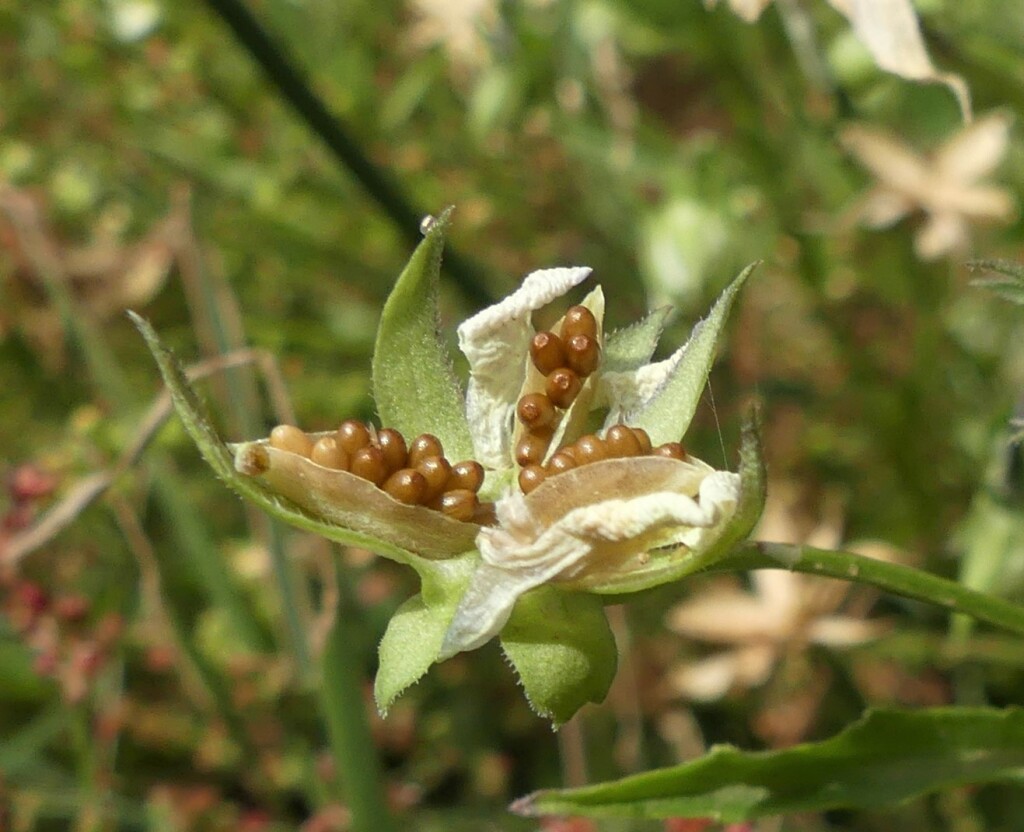Viola arvensis
Murray Field PansyAnnual or biennial herb; stems decumbent to ascending, angular, sparsely pubescent. Leaves at nodes along stem; lamina ovate to elliptic, 10–35 mm long, 5–15 mm wide, base tapered, apex obtuse, margins obtusely toothed to scalloped; petiole 5–20 mm long; stipules mostly 2–4 cm long, pinnately lobed, the mid-lobe leaflike. Flower-scapes 3–8 cm long; bracteoles on upper part of scape. Sepals lanceolate, 6–10 mm long, ciliate, acute to acuminate, basal appendages prominent; petals 5–10 mm long, creamy-white with yellow to orange base, sometimes partly violet, lower (anterior) petal shortly spurred, broadly cuneate; anthers ciliate. Capsule 3-angled, 5–9 mm long. Seed ovoid, c. 1.5 mm long, golden-brown. Flowers Oct.–Mar.
Wim, GipP, EGU, HSF, HNF, VAlp. Also naturalised NSW, ACT, Tas. Native to Europe, northern Africa and western Asia. A weed of mostly high altitude grasslands (e.g. Dargo High Plain, Mt Buller) where distributed by cattle, possibly also naturalised elsewhere.
Entwisle, T.J. (1996). Viola. In: Walsh, N.G.; Entwisle, T.J., Flora of Victoria Vol. 3, Dicotyledons Winteraceae to Myrtaceae, pp. 82–84. Inkata Press, Melbourne.
 Spinning
Spinning


